The Earth is estimated to be approximately 4.54 billion (4,540 million) years old, and its history can be divided into different geological time periods based on significant events such as mass extinctions, the formation of continents, and climatic changes. This division is known as the geological time scale, which provides a framework for understanding the Earth’s past and predicting its future.
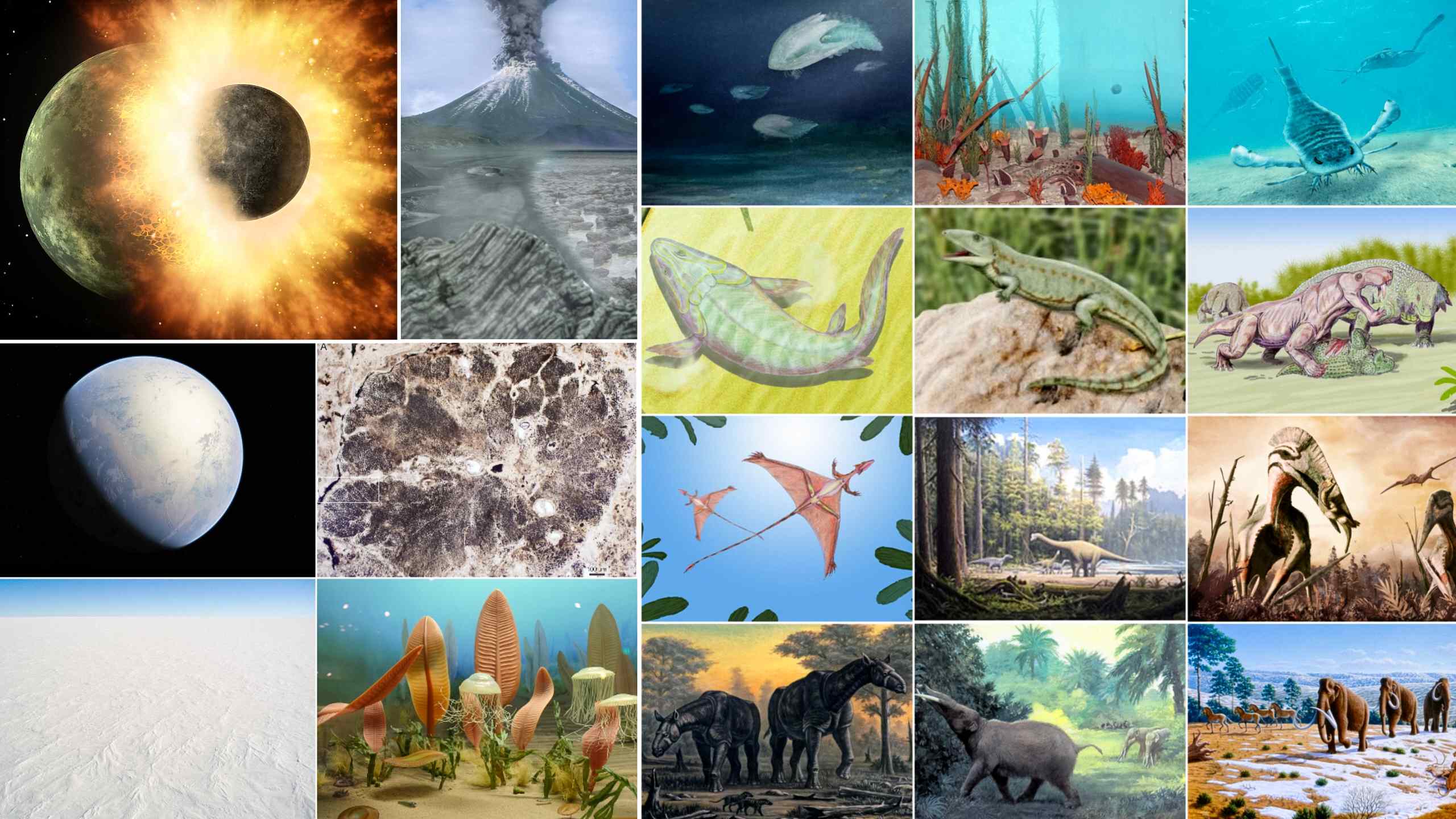
A. Eonothems or eons
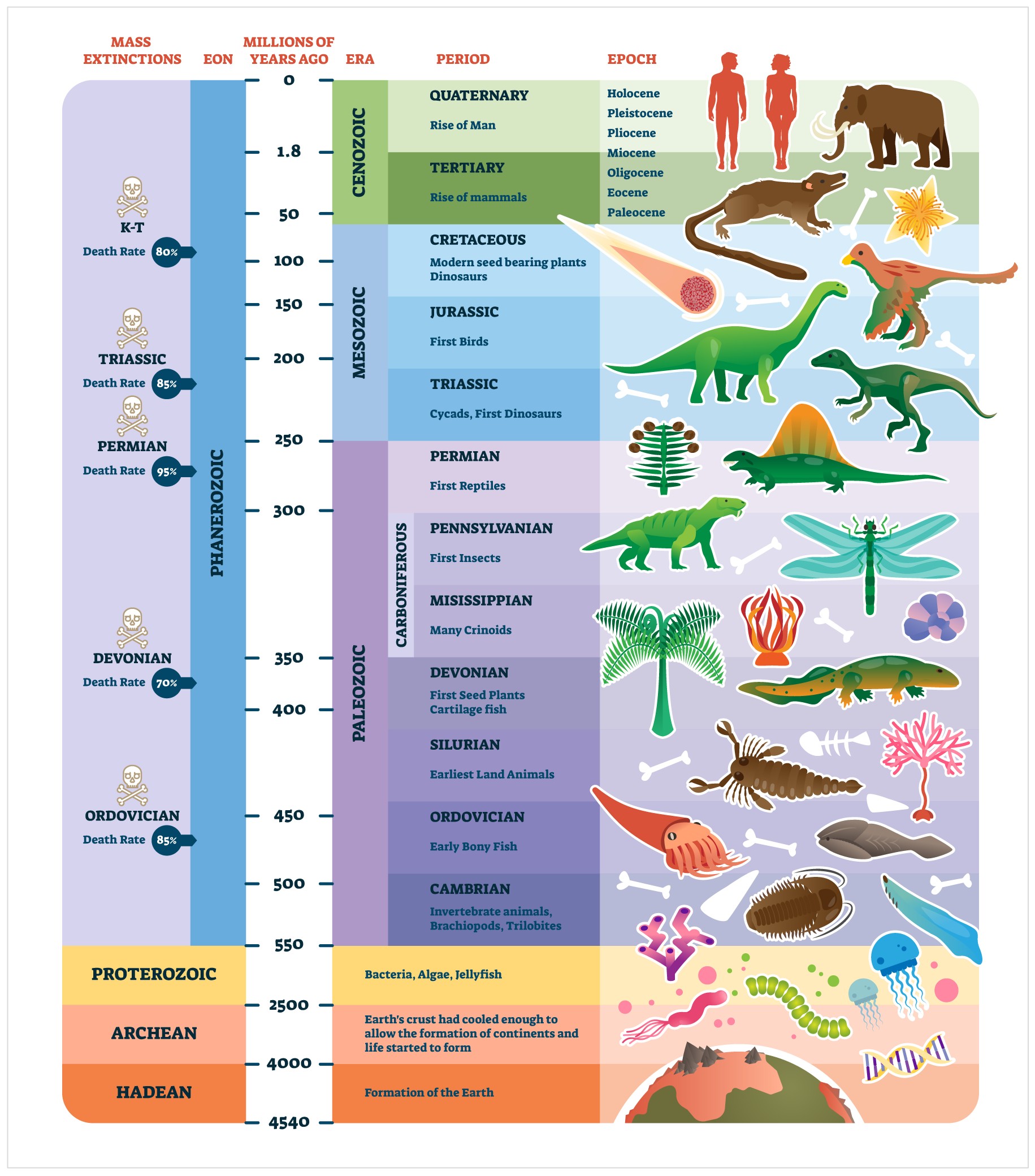
The largest division of the geological time scale is the Eonothem, which is further divided into four eons: 1) The Hadean, 2) Archean, 3) Proterozoic, and 4) Phanerozoic. Then each eon is subdivided into eras (erathem).
1. The Hadean Eon
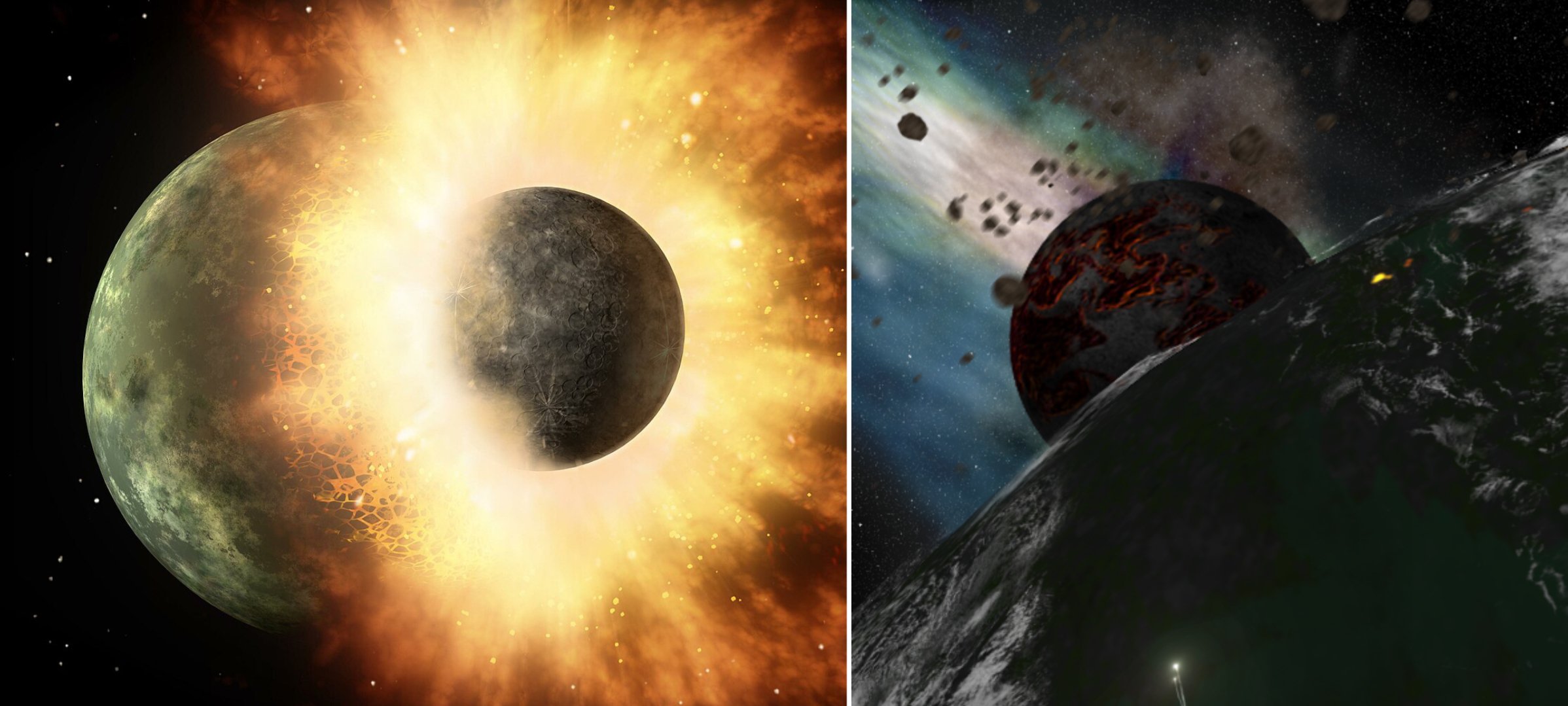
The Hadean eon, which lasted from the formation of the Earth to about 4.6 billion years ago, is considered the “dark ages” due to the lack of substantial geological evidence from this period. It is believed that during the Hadean eon, the Earth was subjected to frequent collisions with other celestial bodies, causing extreme volcanic activity and the formation of the Moon.
2. The Archean Eon
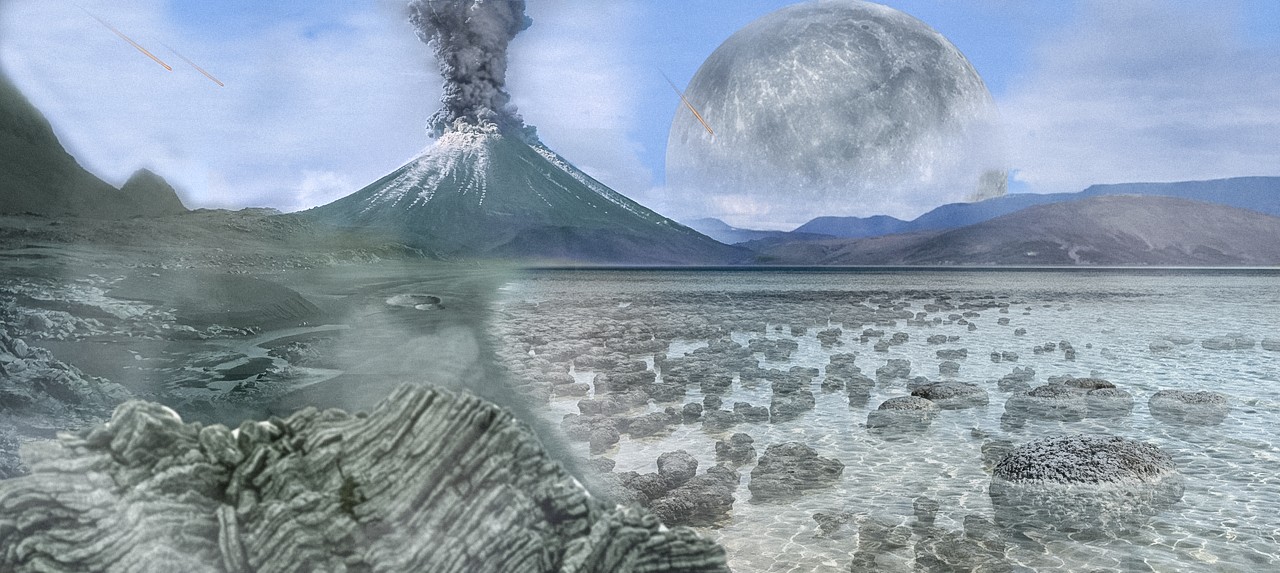
The Archean eon followed the Hadean and lasted from about 4 billion to 2.5 billion years ago. During this time, the Earth was geologically active, with intense volcanic eruptions, the formation of the first continents, and the emergence of primitive life forms. The oldest-known rocks, dating back to 3.8 billion years ago, are found in Western Greenland and reveal the presence of simple microbes called stromatolites, which were the first evidence of life on Earth.
The Archean Eon is subdivided into four eras:
2.1. Eoarchean Era: From 4 to 3.6 billion years ago
During this time, the Earth was still in its early stages of formation and significant geological and biological events were taking place. The Eoarchean is characterized by the formation of the oldest known rocks on Earth, including the Acasta Gneiss in Canada and the Isua Greenstone Belt in Greenland. These rocks provide important insights into the early processes that shaped the Earth’s crust. The Eoarchean also saw the emergence of early life forms, although they were likely simple and microbial in nature. Overall, the Eoarchean marks a critical period in Earth’s history as it set the stage for the development of life and the formation of more complex geological features.
2.2. Paleoarchean Era: From 3.6 to 3.2 billion years ago.
During this time, Earth’s landmasses were still in the early stages of formation, and the atmosphere lacked oxygen. Life on Earth was mainly comprised of simple bacteria and microorganisms. The Paleoarchean is characterized by the formation of some of the oldest rocks and minerals on Earth, including the Barberton Greenstone Belt in South Africa. This era provides valuable insights into the early development and evolution of our planet.
2.3. Mesoarchean Era: From 3.2 to 2.8 billion years ago
During this time, the Earth’s crust was still forming and undergoing significant tectonic activity. The first continents began to emerge, and primitive life forms, such as bacteria and archaea, appeared in the oceans. It is characterized by its hot and humid climate, as well as the presence of volcanic activity and the formation of some of the oldest rocks on Earth.
2.4. Neoarchean Era: From 2.8 to 2.5 billion years ago
During this time, the continents began to stabilize, forming larger landmasses. The Neoarchean also saw the evolution of more complex life forms, including the emergence of multicellular organisms. Additionally, the atmosphere started to contain significant amounts of oxygen, paving the way for the development of aerobic organisms. All in all, the Neoarchean marks a crucial period in Earth’s history, setting the stage for future developments in the planet’s geology and biology.
3. The Proterozoic Eon
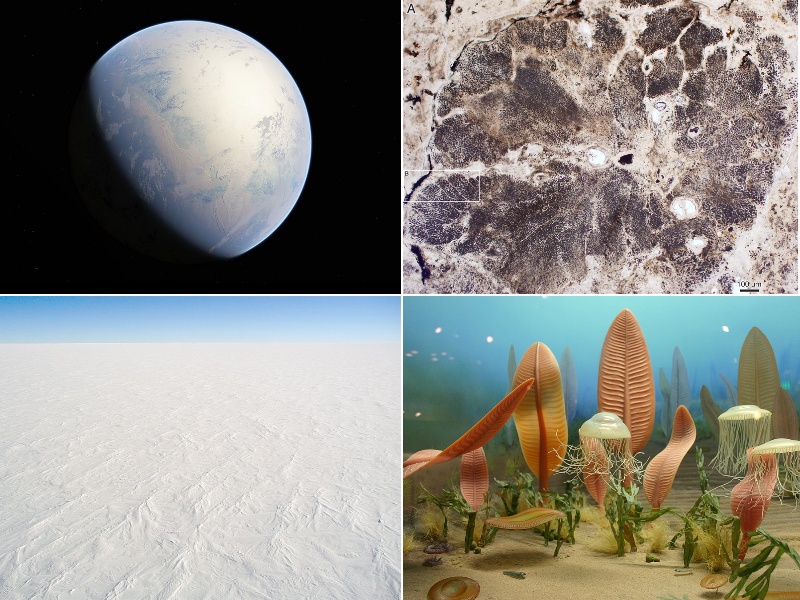
The Proterozoic eon, which lasted from 2.5 billion to 541 million years ago, is characterized by the continued evolution of life forms, including the emergence of more complex organisms such as algae and early multicellular organisms. This period also witnessed the formation of supercontinents, such as Rodinia, and the appearance of oxygen in the atmosphere due to the activity of oxygen-producing photosynthetic organisms.
The Proterozoic Eon is subdivided into three eras:
3.1. Paleoproterozoic Era: From 2.5 to 1.6 billion years ago
During this time, Earth experienced significant geological and biological changes. The supercontinent Columbia began to break up, leading to the formation of new continents and oceans. The atmosphere also underwent major transformations, with the development of the oxygen-rich environment that supports complex life forms. The fossil record from this period provides important insights into the early evolution of life, including the emergence of photosynthetic organisms and the first multicellular organisms. Overall, the Paleoproterozoic was a critical period in Earth’s history, setting the stage for the subsequent diversification of life in the following eras.
3.2. Mesoproterozoic Era: From 1.6 to 1 billion years ago
This era is characterized by significant geological and biological events, including the formation of important supercontinents like Columbia, extensive glaciations, and the diversification of early eukaryotic organisms. This era is considered a crucial time in Earth’s history as it set the stage for the development of complex life forms in the following eras.
3.3. Neoproterozoic Era: From 1 billion to 538.8 million years ago
This is noteworthy that the Hadean, Archean and Proterozoic, these three eons are collectively called Precambrian Era. This is the earliest and longest era, spanning from the formation of Earth around 4.6 billion years ago until the beginning of the Paleozoic Era (in other words, until the beginning of the Phanerozoic eon).
4. The Phanerozoic Eon

The Phanerozoic Eon began about 541 million years ago and continues to the present day. It is divided into three eras: the Paleozoic, Mesozoic, and Cenozoic.
4.1. The Paleozoic Era
The Paleozoic Era, which lasted from 541 to 252 million years ago, is known for the rapid diversification of life forms, including the rise of marine animals, the colonization of land by plants, and the appearance of insects and early reptiles. It also includes the famous Permian-Triassic mass extinction event, which wiped out approximately 90% of all marine species and 70% of terrestrial vertebrate species.
4.2. The Mesozoic Era
The Mesozoic Era, often referred to as the “Age of Dinosaurs,” spanned from 252 to 66 million years ago. This era witnessed the dominance of dinosaurs on land, as well as the emergence and evolution of many other groups of organisms, including mammals, birds, and flowering plants. The Mesozoic also includes another major extinction event, the Cretaceous-Paleogene extinction, which led to the demise of non-avian dinosaurs and the rise of mammals as the dominant terrestrial vertebrates.
4.3. The Cenozoic Era
The Cenozoic Era began about 66 million years ago and continues to the present day. It is marked by the diversification and dominance of mammals, including the emergence of large mammals such as elephants and whales. The evolution of humans is also included in this era, with the appearance and development of Homo sapiens occurring only around 300,000 years ago.
B. Periods, epochs and ages
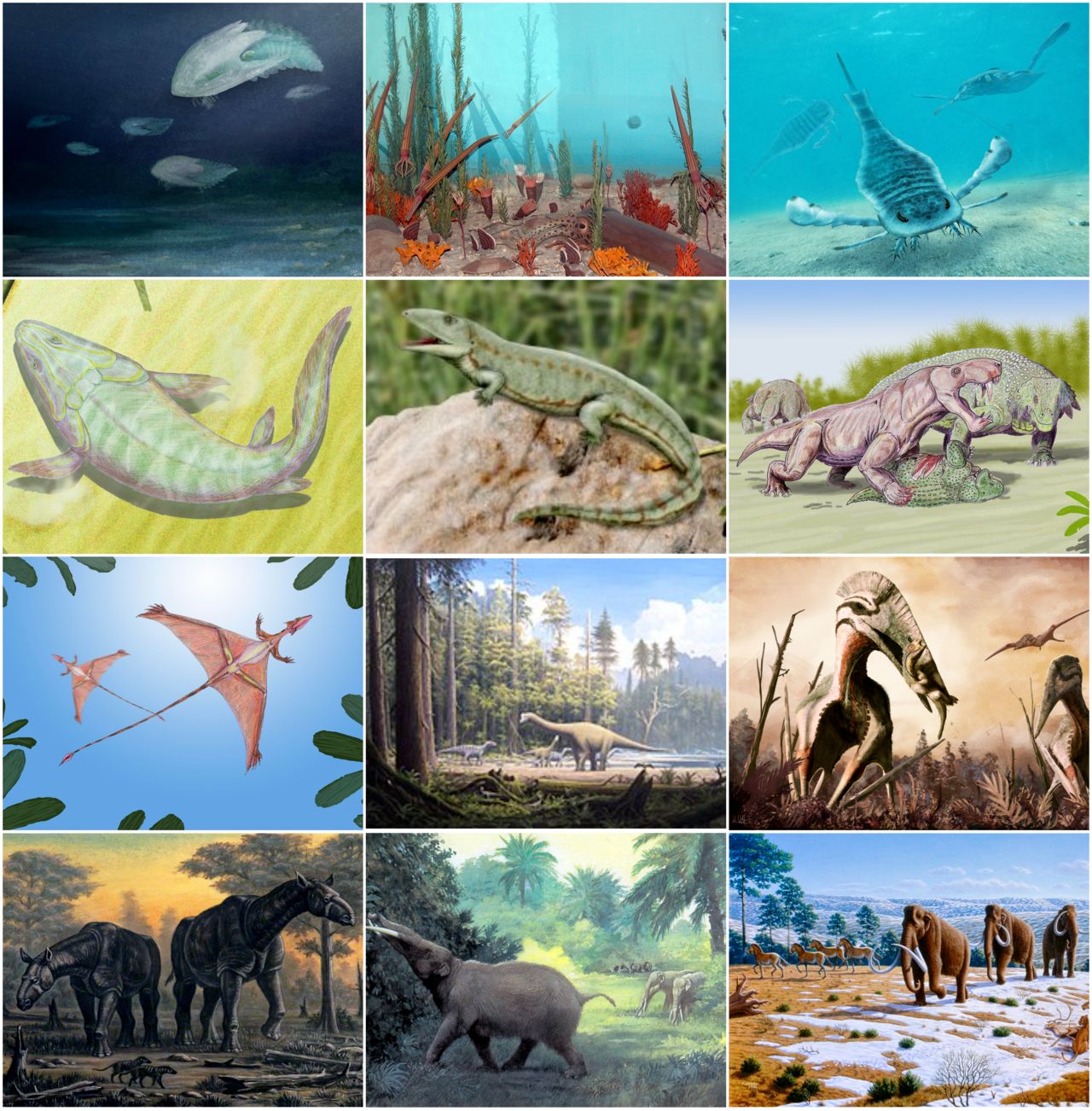
To further divide the geological time scale, each Phanerozoic Era is then subdivided into periods (systems), which are further divided into epochs (series), and then into ages (stages).
Periods in Paleozoic Era
The Paleozoic Era, that begins around 541 million years ago and lasts until 252 million years ago, is often referred to as the “Age of Invertebrates” and consists of the following periods:
- Cambrian Period: Known for the “Cambrian Explosion,” which saw the rapid diversification of life forms, including the first appearance of many animal phyla.
- Ordovician Period: Marked by the proliferation of marine invertebrates and the first colonization of land by plants.
- Silurian Period: During this period, life continued to evolve, with the emergence of the first jawed fish.
- Devonian Period: Often called the “Age of Fishes,” this period witnesses the diversification of fish and the appearance of the first tetrapods.
- Carboniferous Period: Notable for the development of vast swamps and the subsequent formation of coal deposits.
- Permian Period: This period ends the Paleozoic Era and is marked by the emergence of reptiles and the first appearance of mammals.
Periods in Mesozoic Era
Mesozoic Era, that spans from 252 million years ago to 66 million years ago and is known as the “Age of Reptiles,” comprises the following periods:
- Triassic Period: Life slowly recovered from the mass extinction at the end of the Permian, with the evolution of the first dinosaurs and flying reptiles.
- Jurassic Period: This period is famous for the dominance of dinosaurs, including the largest land animals ever to have lived.
- Cretaceous Period: The last and final period of the Mesozoic Era is marked by the appearance of flowering plants, the diversification of dinosaurs, and the eventual extinction event that wiped out non-avian dinosaurs.
Periods in Cenozoic Era
As previously said, this is the current era, ranging from 66 million years ago to the present day, often referred to as the “Age of Mammals.” It is divided into the following periods:
- Paleogene Period: This period includes the Paleocene, Eocene, and Oligocene epochs, during which mammals diversified and evolved into various forms.
- Neogene Period: This period includes the Miocene and Pliocene epochs and is marked by the rise of modern mammals and the emergence of early hominids.
- Quaternary Period: The current period, consisting of the Pleistocene epoch, characterized by ice ages and the appearance of Homo sapiens, and the ongoing Holocene epoch, during which human civilization developed.
Each period under the era within the Phanerozoic Eon is further broken down into smaller time units called epochs. For example, within the Cenozoic Era, epochs include the Paleocene, Eocene, Oligocene, Miocene, Pliocene, Pleistocene, and Holocene. Therefore, the Quaternary period, which belongs to the Cenozoic Era (and the Phanerozoic Eon), is made up by two epochs: the Pleistocene and the Holocene.
The Pleistocene and the Holocene Epochs
The Pleistocene Epoch and the Holocene Epoch are two consecutive periods in Earth’s history.
The Pleistocene Epoch lasted from about 2.6 million years ago to around 11,700 years ago. It is characterized by repeated glaciations, where large areas of land were covered by ice sheets and glaciers. These glaciations caused sea levels to drop significantly and created changes in climate patterns, leading to the extinction of many species and the evolution of new ones. Notable megafauna, such as mammoths and saber-toothed cats, roamed the Earth during this period. The Pleistocene Epoch is also known as the Ice Age, as it was marked by colder average global temperatures compared to the present day.
The Holocene Epoch began after the last glacial period, marking the transition to a warmer, more stable climate. It started about 11,700 years ago and continues to the present day. The Holocene is characterized by the retreat of glaciers, the rise in sea levels, and the establishment of modern ecosystems. This period encompasses the rise of human civilization, including the development of agriculture and the advent of written history.
Overall, the Pleistocene Epoch was a time of significant environmental changes and the emergence of various species, while the Holocene Epoch represents a relatively stable period with the dominance of Homo sapiens and human-induced changes to the environment.
The Pleistocene Epoch is further divided into Gelasian, Calabrian, Chibanian and Tarantian/Late Pleistocene Ages. While the Holocene Epoch is divided into Greenlandian, Northgrippian and Meghalayan (the current age) Ages.
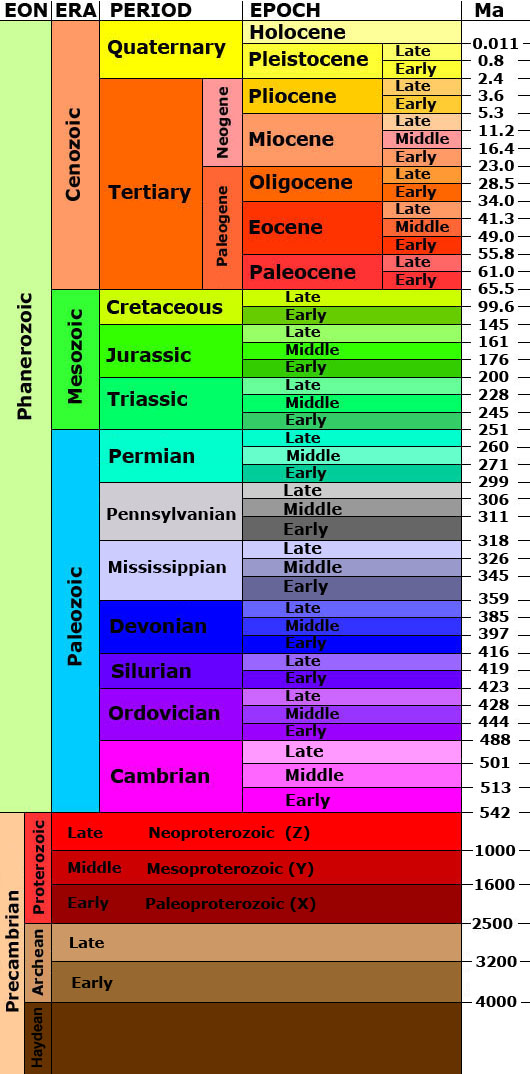
It is worthy of mention that the Phanerozoic Eon is significantly the most studied time segment of Earth’s history in science, making Paleozoic, Mesozoic and Cenozoic the most important eras of all.
Final words
The geological time scale is constantly being refined and updated as new evidence is discovered and studied. Advances in technology and the ability to accurately date rocks and fossils have contributed to our understanding of the Earth’s history. By studying the geological time scale, scientists can gain tremendous knowledge of the processes and events that have shaped our planet and make predictions about its future.
Note: To keep the article simple, concise and comprehensible we have not written about every part of the geological time scale. If you want to learn more about geological timelines, read this Wikipedia page.




